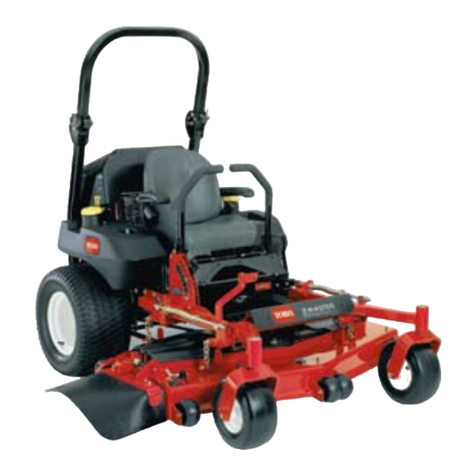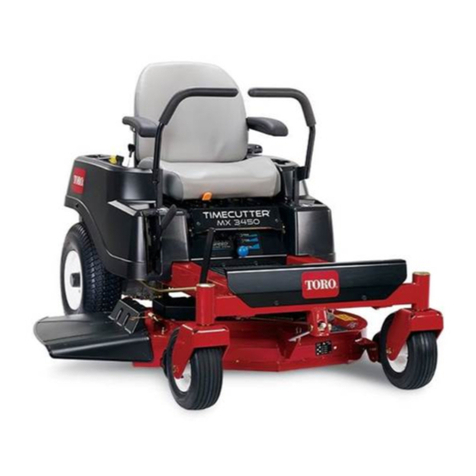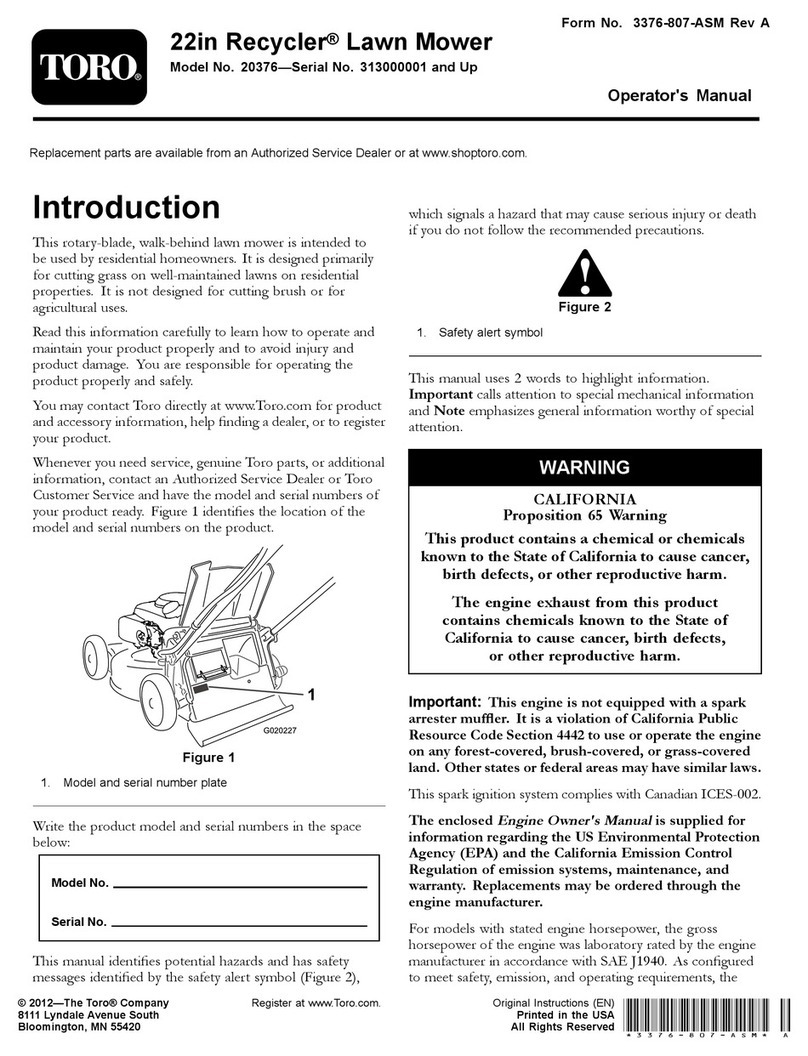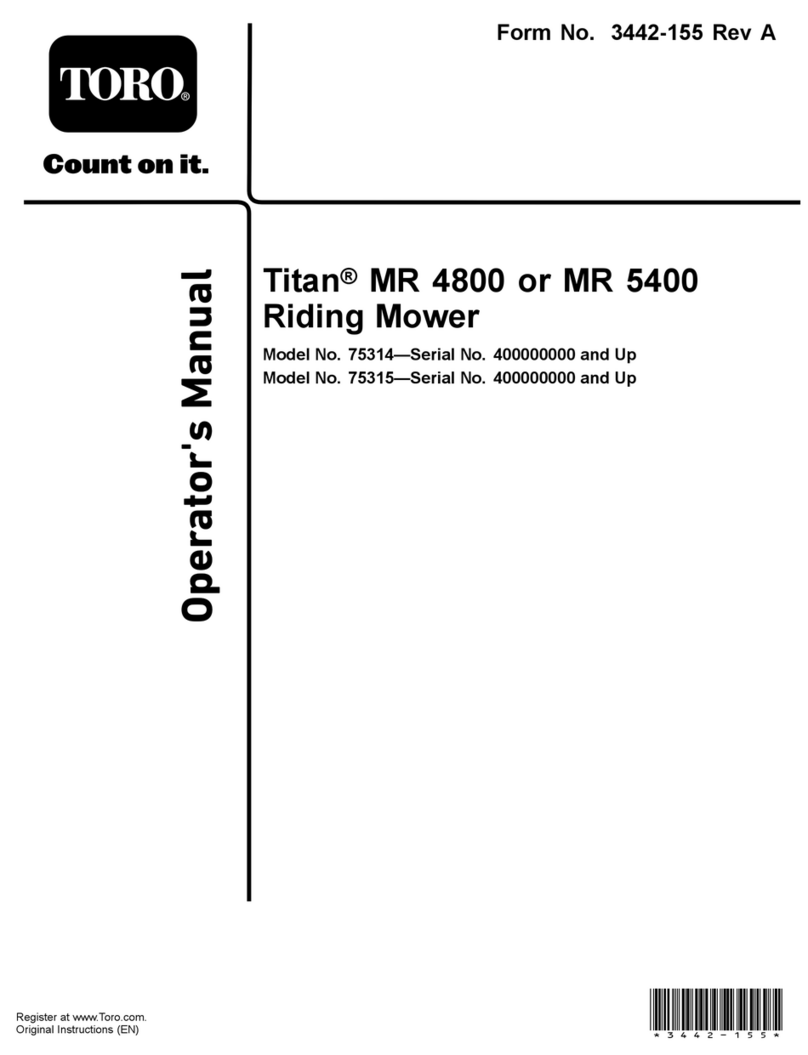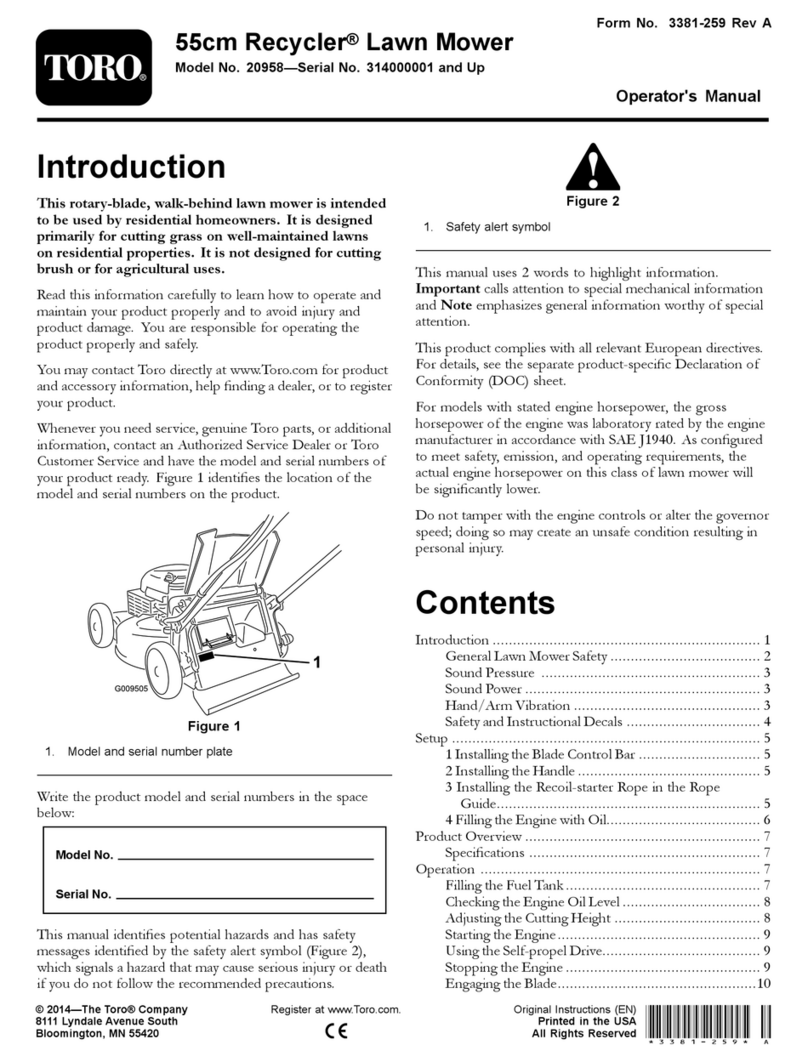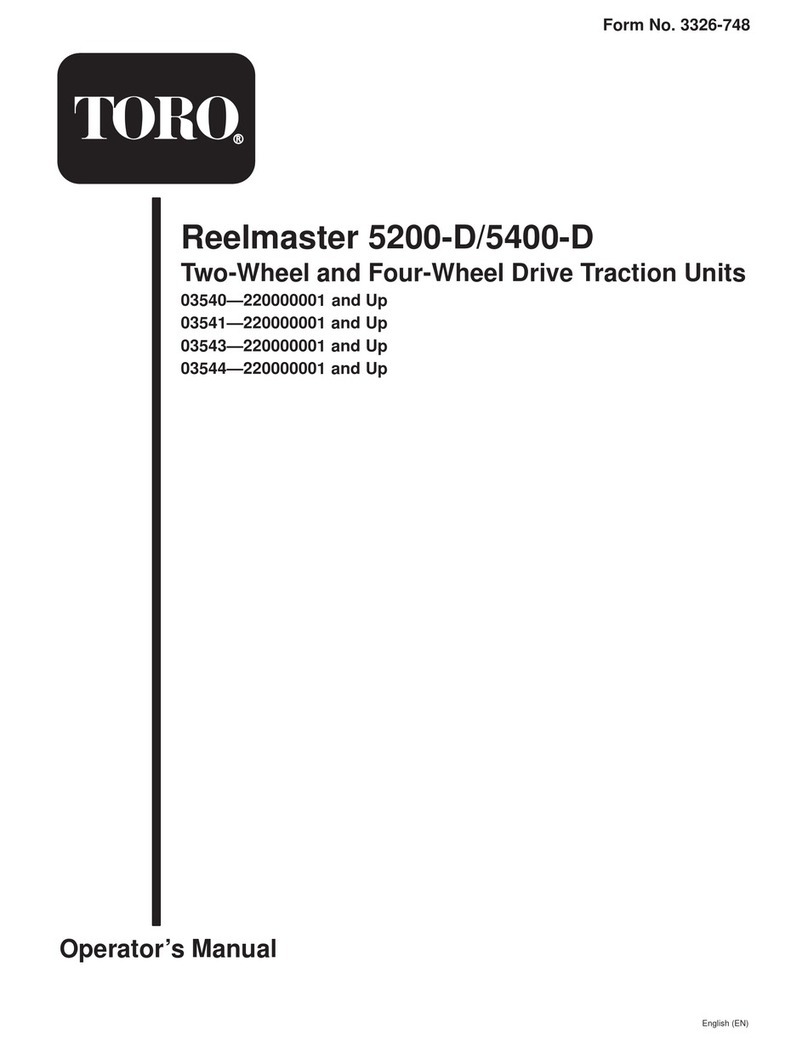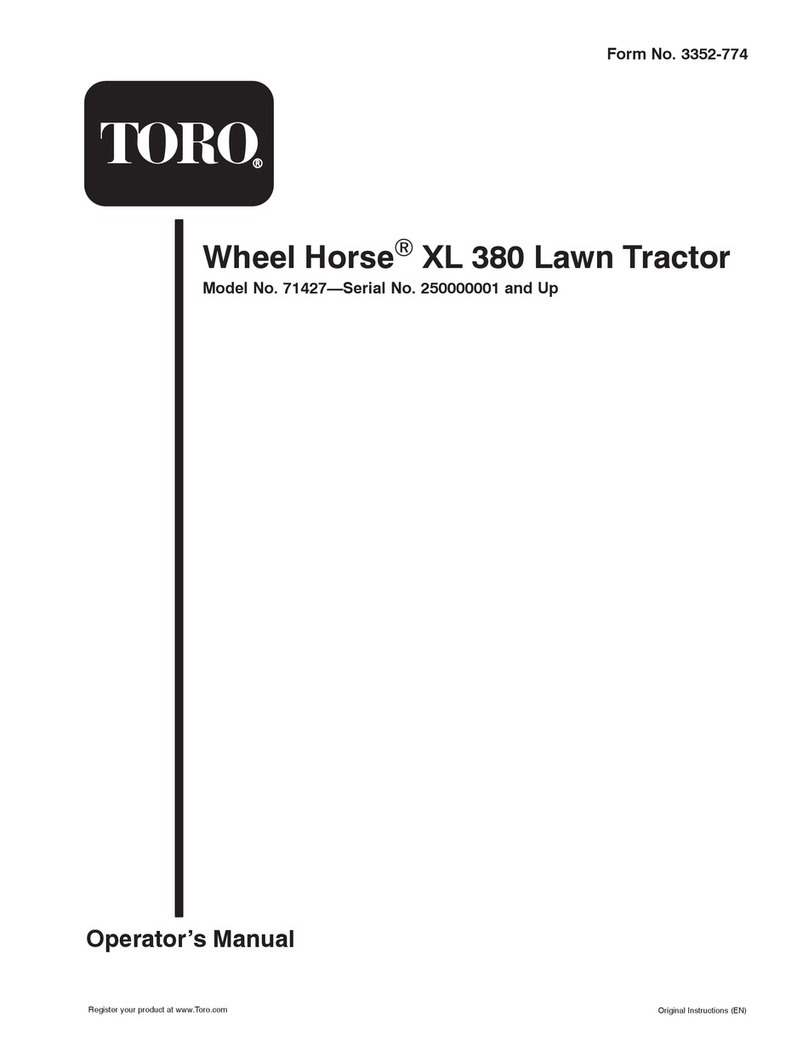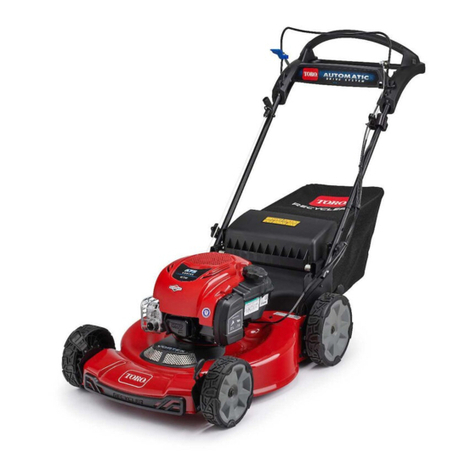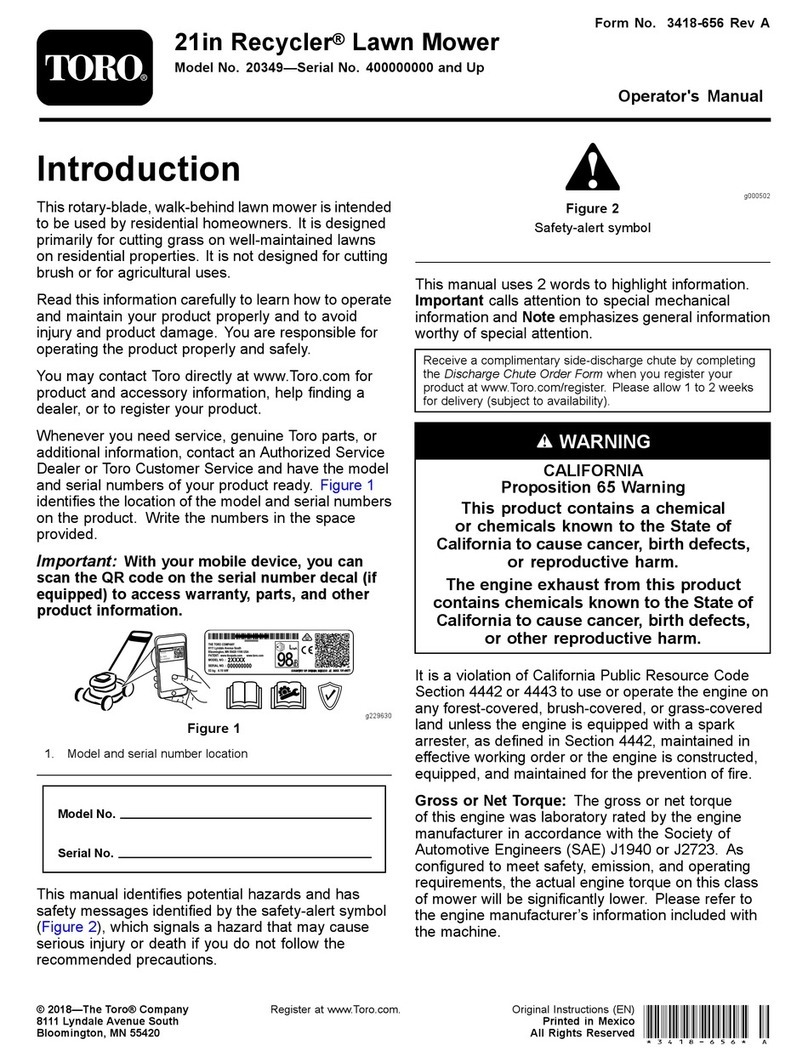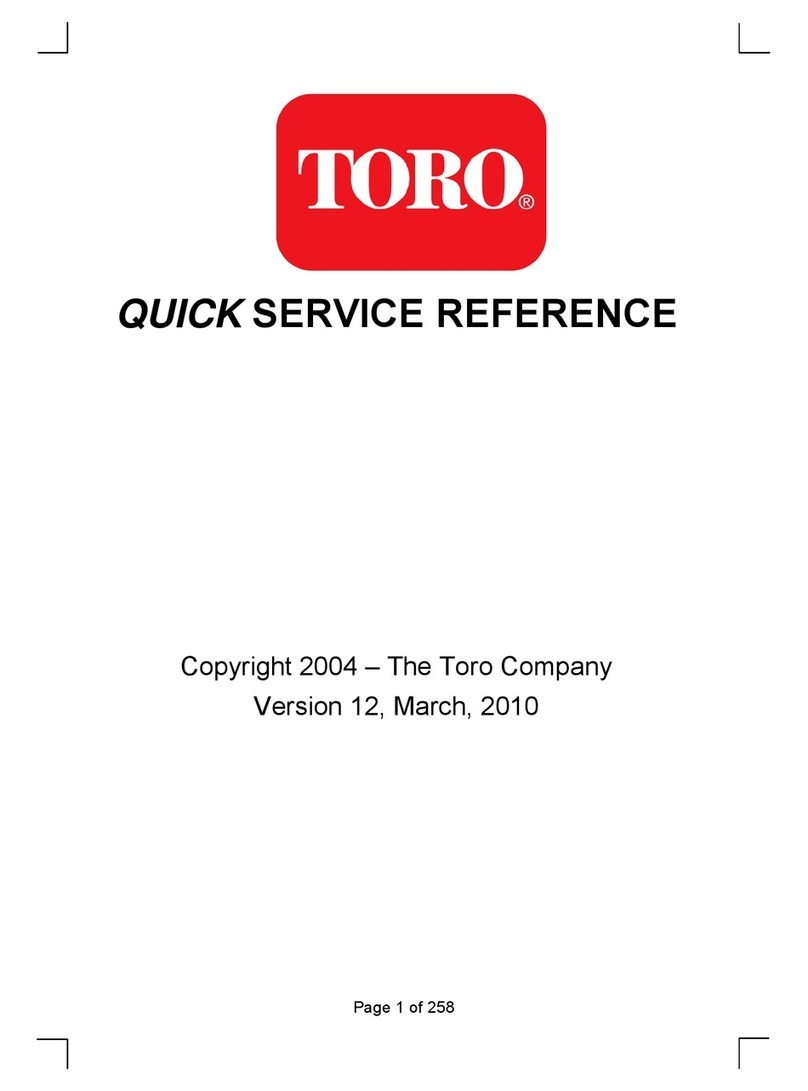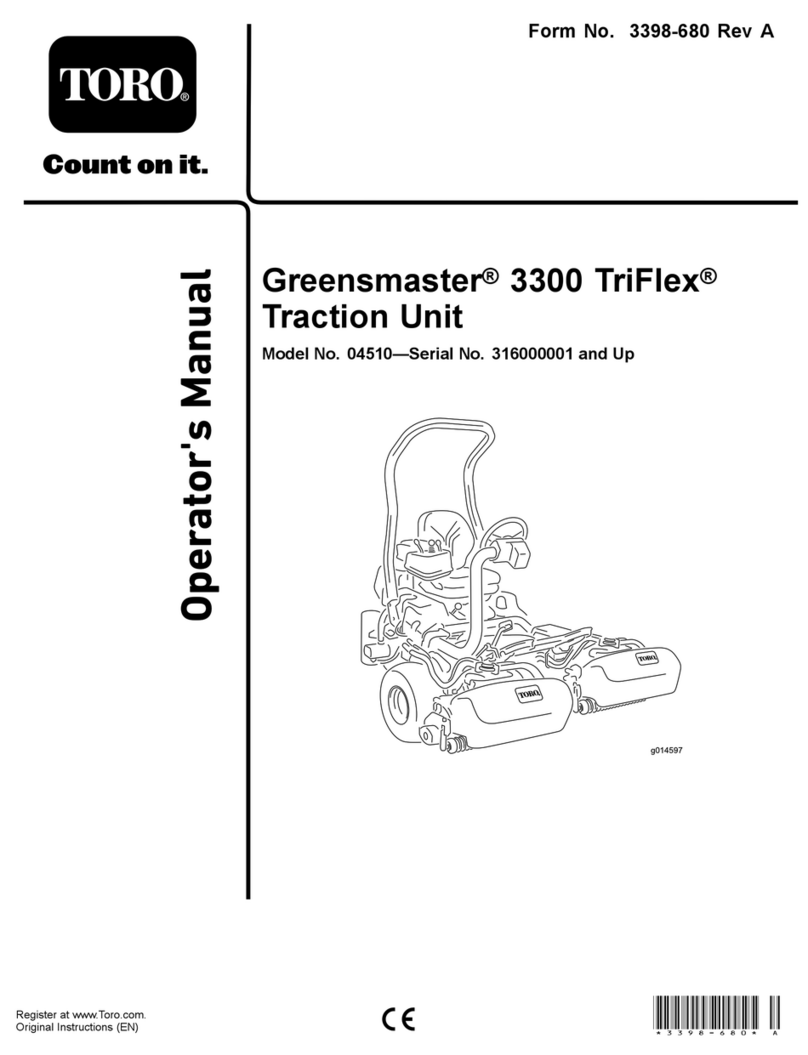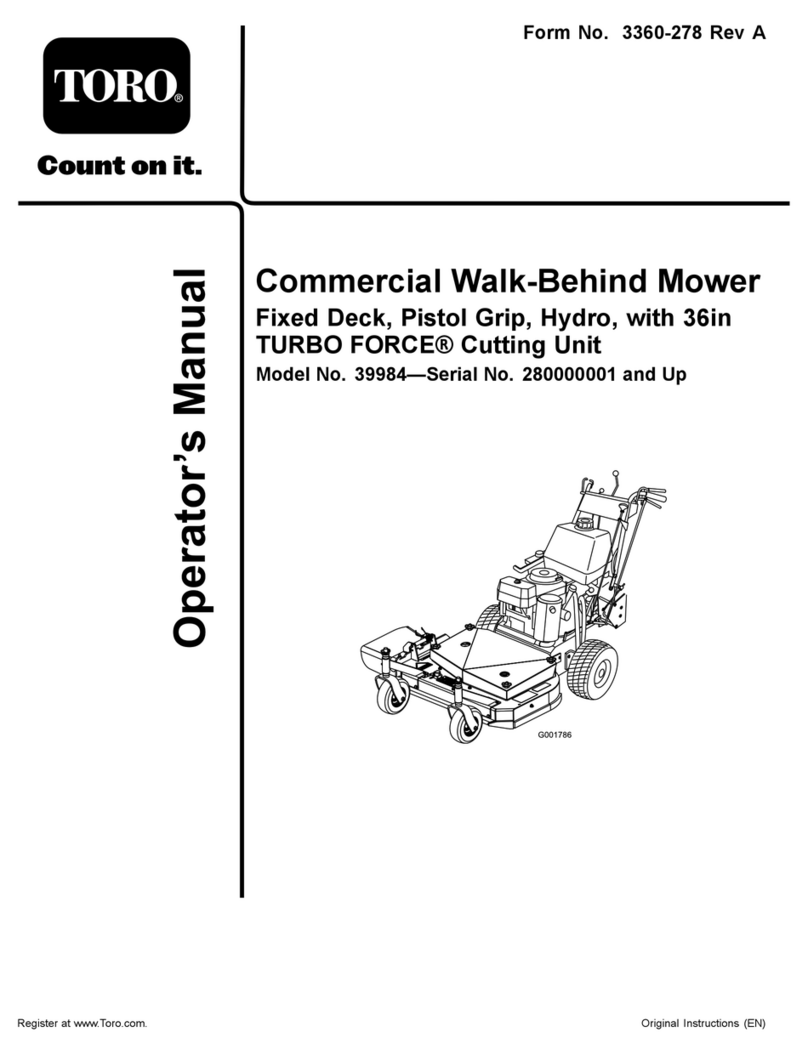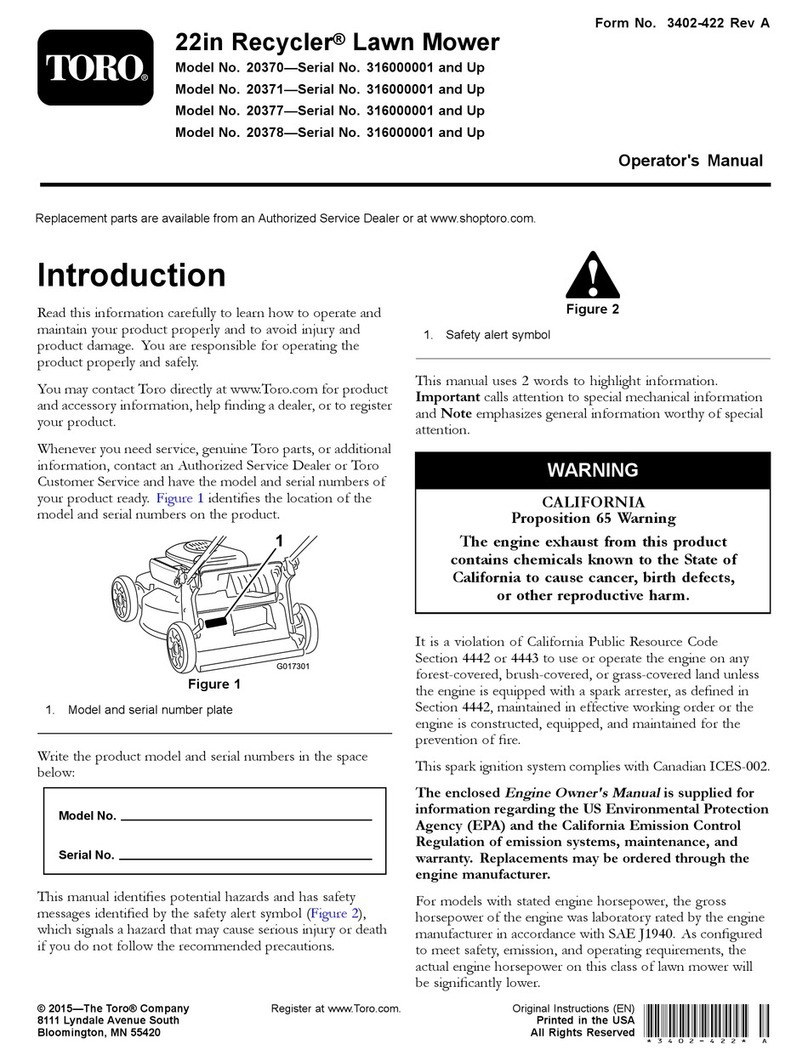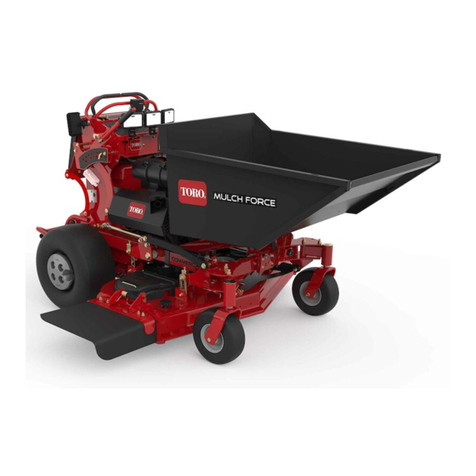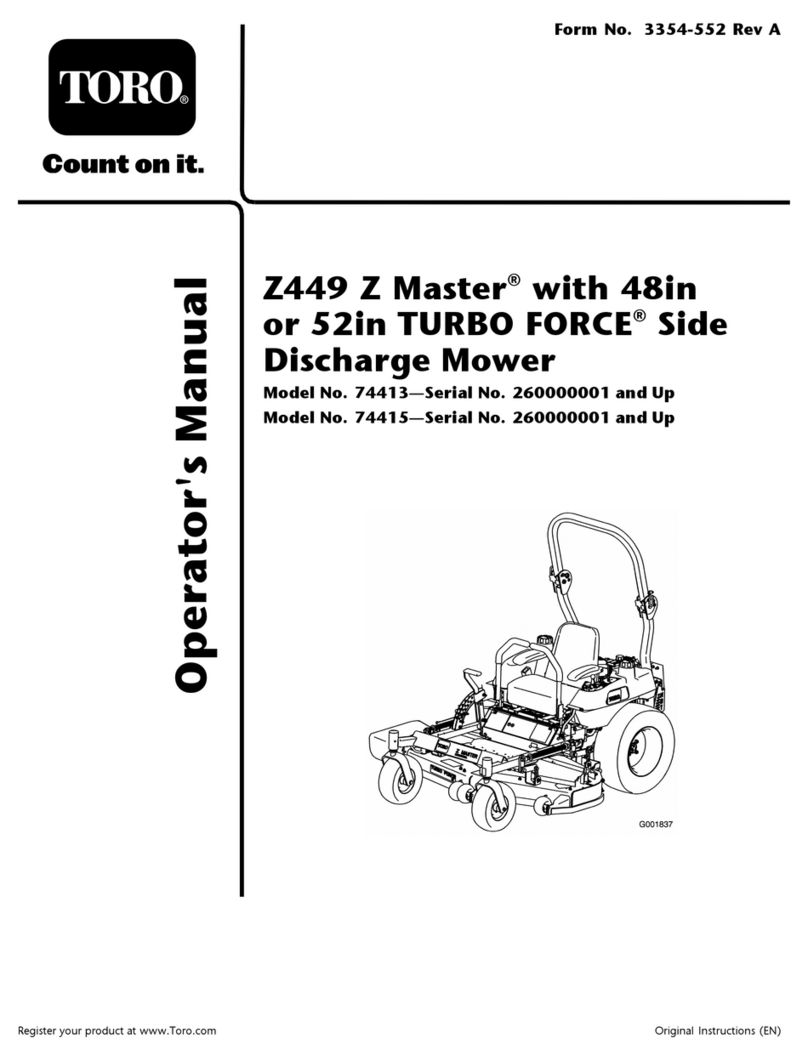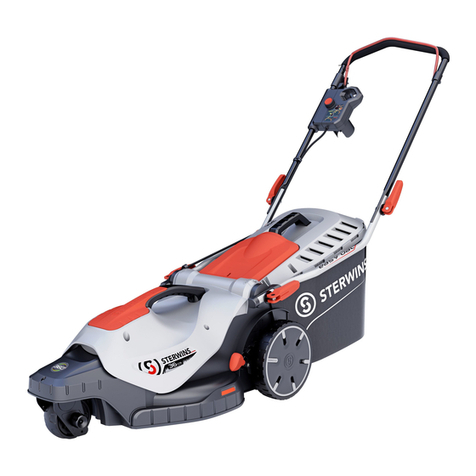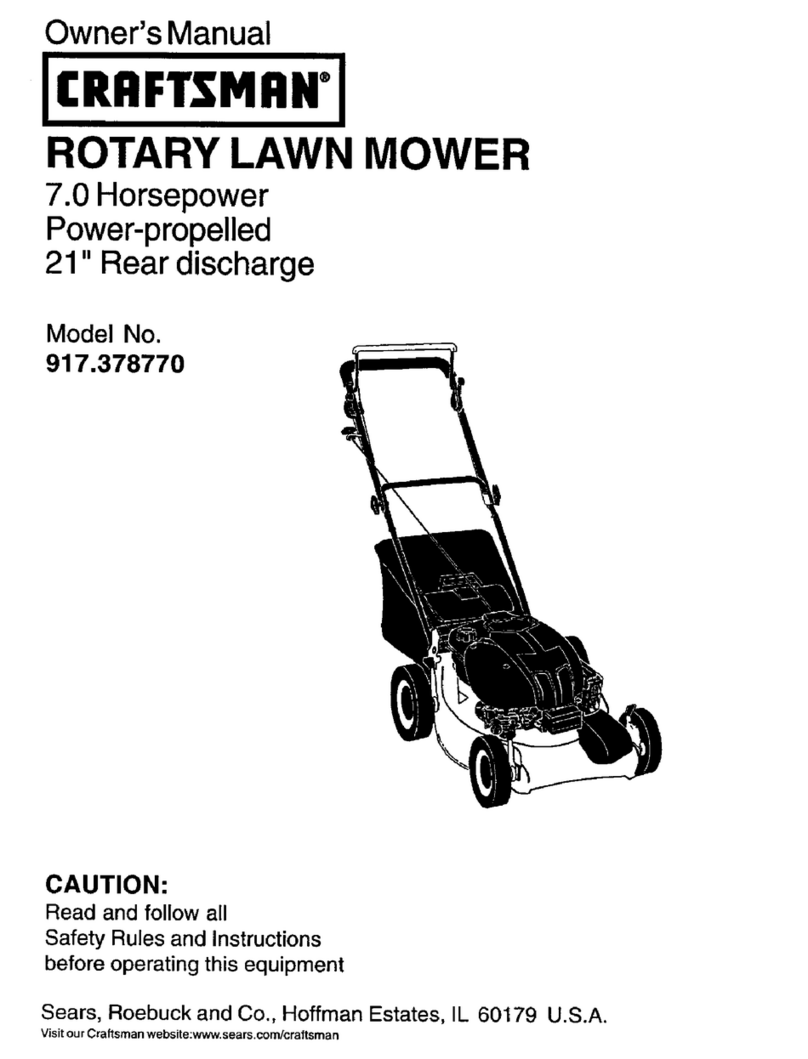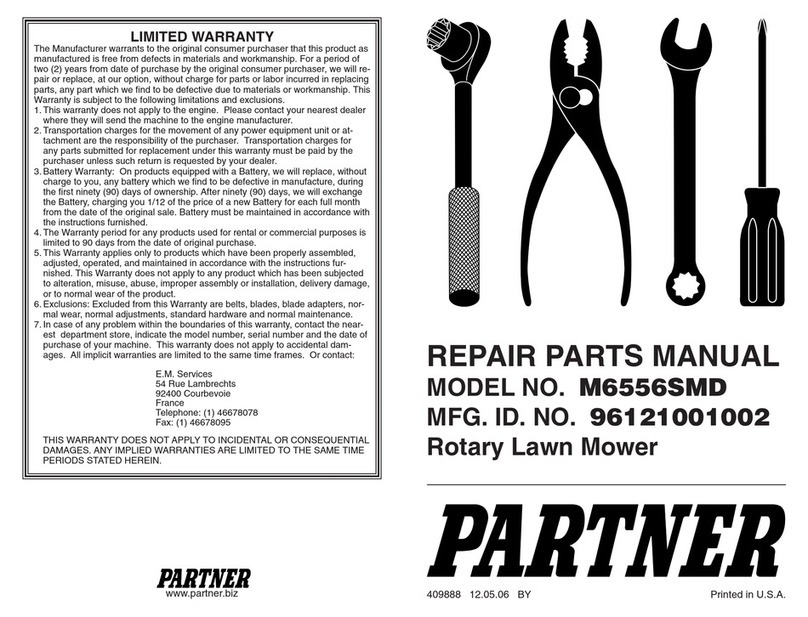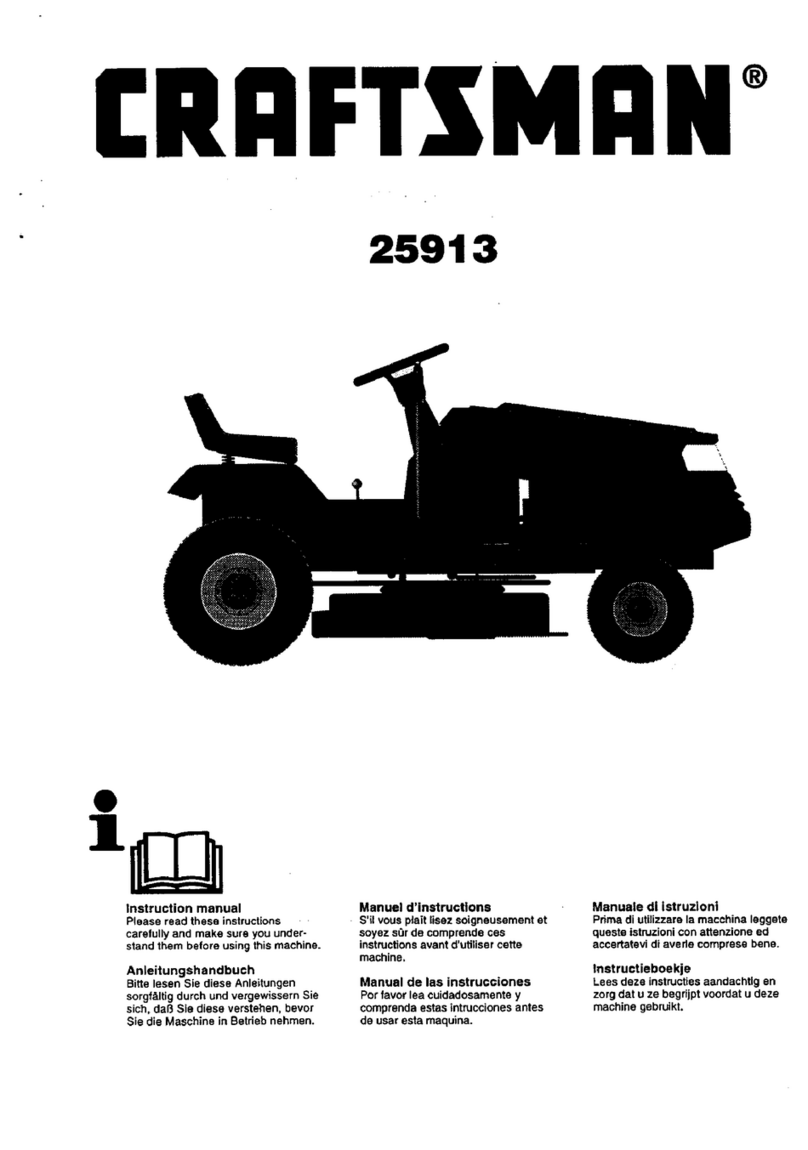
6
•Do not operate the machine while wearing tennis shoes
or sneakers.
•Wearing safety shoes and long pants is advisable and
required by some local ordinances and insurance
regulations.
•Keep hands, feet, and clothing away from moving parts
and the mower discharge area and underside of the
mower while the engine is running.
•Fill fuel tank until level is 1 in. (25 mm) below the
bottom of the filler neck. Do not overfill.
•Check the safety interlock switches daily for proper
operation. If a switch should fail, replace the switch
before operating the machine. After every two years,
replace all interlock switches in the safety system,
regardless if they are working properly or not.
•Check carefully for overhead clearances (i.e. branches,
doorways, electrical wires) before driving under any
objects and do not contact them.
•Do not mow in reverse unless absolutely necessary.
•Reduce speed when making sharp turns.
•If a steep slope must be ascended, back up the hill and
drive forward down the hill, keeping the machine in
gear.
•If you cannot back up a slope or if you feel uneasy on it,
do not mow it.
•Avoid starting or stopping on a slope. If tires lose
traction, disengage the blades and proceed slowly
straight down the slope. Avoid raising the wing cutting
units on a slope.
•Avoid turning on slopes. If you must turn, turn slowly
and gradually downhill, if possible.
•When operating the machine on slopes, banks, or near
drop offs, always have the ROPS installed.
•When operating a machine with a ROPS, always use a
seat belt.
•Be certain that the seat belt can be released quickly if
the machine is driven or rolls into a pond or water.
•Watch for traffic when near or crossing roads. Always
yield the right-of-way.
•Do not mow near drop-offs, ditches, or embankments.
The machine could suddenly turn over if a wheel goes
over the edge of a cliff or ditch, or if an edge caves in.
•Do not mow on wet grass. Reduced traction could cause
sliding.
•Do not try to stabilize the machine by putting your foot
on the ground.
•Use extra care with other attachments. These can
change the stability of the machine.
•When a person or pet appears unexpectedly in or near
the mowing area, stop mowing. Careless operation,
combined with terrain angles, ricochets, or improperly
positioned guards can lead to thrown object injuries. Do
not resume mowing until the area is cleared.
•Turn off the blades when not mowing.
Maintenance and Storage
•Do not touch equipment or attachment parts which may
be hot from operation. Allow to cool before attempting
to maintain, adjust, or service.
•Never store the machine or fuel container inside where
there is an open flame, such as near a water heater or
furnace.
•Keep nuts and bolts tight, especially the blade
attachment bolts. Keep equipment in good condition.
•Make sure all hydraulic line connectors are tight and all
hydraulic hoses and lines are in good condition before
applying pressure to the system.
•Keep your body and hands away from pin hole leaks or
nozzles that eject hydraulic fluid under high pressure.
Use paper or cardboard, not your hands, to search for
leaks. Hydraulic fluid escaping under pressure can have
sufficient force to penetrate the skin and cause serious
injury. If fluid is injected into the skin it must be
surgically removed within a few hours by a doctor
familiar with this form of injury or gangrene may result.
•If the engine must be running to perform a maintenance
adjustment, keep hands, feet, clothing, and any parts of
the body away from the cutting units, attachments, and
any moving parts. Keep everyone away.
•Check brake operation frequently. Adjust and service as
required.
•Battery acid is poisonous and can cause burns. Avoid
contact with skin, eyes, and clothing. Protect your face,
eyes, and clothing when working with a battery.
•Battery gases can explode. Keep cigarettes, sparks, and
flames away from the battery.
•The engine must be shut off before checking the oil or
adding oil to the crankcase.
•If major repairs are ever needed or if assistance is
desired, contact an Authorized Toro Distributor.
•To make sure of optimum performance and continued
safety certification of the machine, use only genuine
Toro replacement parts and accessories. Replacement
parts and accessories made by other manufacturers
could be dangerous, and such use could void the
product warranty.
